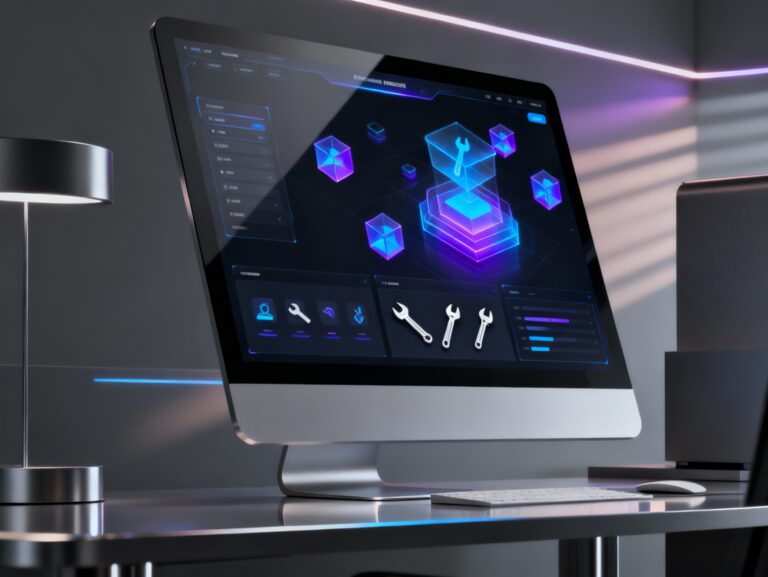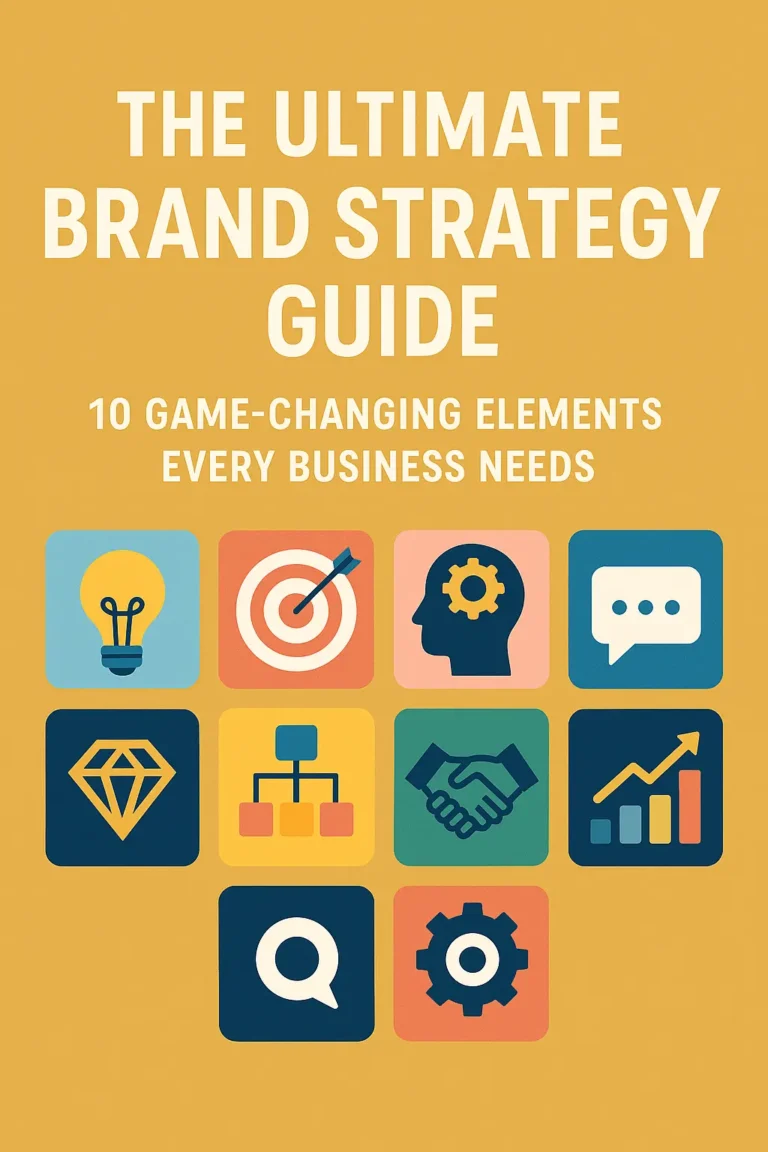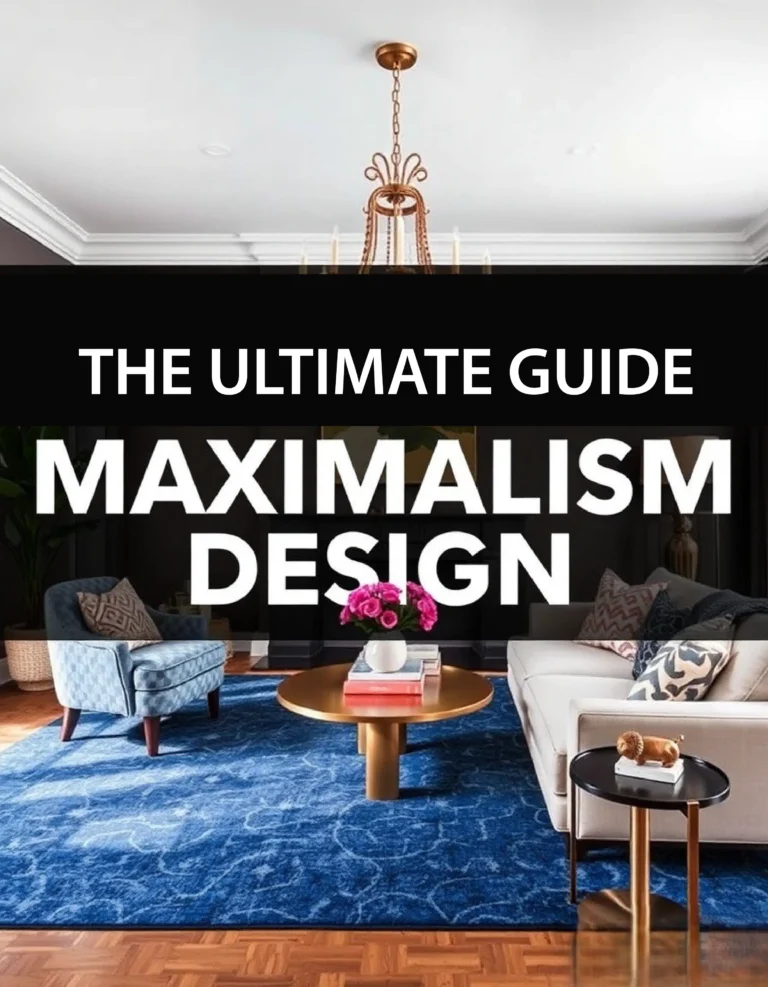
Meta Description: Discover how minimalist typography is revolutionizing modern design. Learn key principles, best font pairings, and top tools for clean, impactful typography.
Picture this: you’re scrolling through Instagram, and boom—a simple black sans-serif word on white background stops you dead in your tracks. No fancy flourishes, no rainbow gradients, just pure typographic power. That’s minimalist typography doing what it does best: speaking volumes with whispers.
I’ve been watching this typography revolution unfold, and honestly? It’s fascinating how stripping everything away can make such a bold statement. Whether you’re a seasoned graphic designer or just dipping your toes into the typography pool, you’ve probably noticed this shift toward cleaner, simpler letterforms dominating everything from Apple’s interfaces to your favorite indie coffee shop’s branding.
Let me take you on a journey through the world of minimalist typography—where less truly becomes more, and where every letter carries weight precisely because of what’s not there.
1. The Philosophy Behind Minimalist Typography: Less Is Actually More
What is minimalist typography? Simply put, it’s the art of communicating maximum impact with minimal visual elements. Think of it as the Marie Kondo approach to letterforms—if a flourish doesn’t spark joy (or serve a function), it’s got to go.
This isn’t just about being trendy; it’s rooted in genuine functionality. When I first started exploring minimalist typography, I realized it’s like a perfectly tailored suit—every element has purpose, nothing is superfluous, and the result is effortlessly elegant.
The core principles revolve around:
- Clarity over complexity
- Function driving form
- Strategic use of white space
- Intentional hierarchy
Insert image of comparison between ornate Victorian typography and modern minimalist design here
What makes this approach different from traditional typography? Traditional design often celebrates ornamentation—think elaborate serifs, decorative elements, and complex layouts. Minimalist typography says, « Hold up, what if we removed all that noise and let the message breathe? »
2. Sans-Serif Fonts: The Backbone of Modern Minimalism
Here’s where things get interesting. Sans-serif fonts have become the unofficial mascot of minimalist typography, and there’s solid reasoning behind this love affair.
I remember working on a project where the client insisted on a decorative serif font for their tech startup’s logo. After showing them the same text in a clean sans-serif like Montserrat, the difference was night and day. The sans-serif version felt modern, approachable, and infinitely more scalable across digital platforms.
Why sans-serif works so well in minimalism:
- Clean lines that translate beautifully across all screen sizes
- No decorative strokes to distract from the message
- Excellent legibility at both large and small sizes
- Timeless quality that won’t look dated in five years
Some of my go-to minimalist fonts include:
- Open Sans for its incredible versatility
- Lato for that friendly-yet-professional vibe
- Roboto when you need something that plays well with Google’s ecosystem
- Raleway for elegant heading treatments
Insert image showcasing these popular sans-serif fonts in minimalist layouts here
3. The Art of Font Pairing in Minimalist Design
Now, let’s talk about something that makes or breaks minimalist typography: font pairing. This is where I see a lot of designers stumble. They think minimalism means using just one font everywhere, but that’s like trying to paint a masterpiece with only one brush.
Effective minimalist font combinations create hierarchy without chaos. Here are some pairings that consistently deliver:
Header FontBody FontWhy It WorksMontserratOpen SansGeometric header meets humanist bodyLatoRalewayBoth friendly, different personalitiesRobotoNunitoGoogle's precision meets warmth
The secret sauce? Contrast without conflict. You want fonts that complement each other while serving different purposes. I usually pair a slightly more geometric font for headings with a more readable humanist sans-serif for body text.
One trick I’ve learned: test your pairings at actual use sizes. What looks great at 72pt might fall apart at 12pt.
4. White Space: The Unsung Hero of Minimalist Typography
White space (or negative space, if you’re feeling fancy) is probably the most underutilized design element I encounter. It’s not empty space—it’s breathing room for your typography to truly shine.
I’ve seen countless designs where beautiful minimalist fonts get suffocated by tight spacing and cramped layouts. It’s like putting a zen garden in a storage closet. The typography might be perfect, but without adequate white space, the minimalist effect is completely lost.
Strategic white space serves multiple purposes:
- Guides the reader’s eye through your content
- Creates visual hierarchy without additional design elements
- Improves readability and comprehension
- Adds sophistication and premium feel
Insert image demonstrating effective use of white space in minimalist typography layouts here
Think about Apple’s website or product packaging. The generous white space around their minimal typography isn’t accidental—it’s a calculated decision that makes their message feel more important and authoritative.
5. Implementing Minimalist Typography in Web Design
Minimalist typography in web design is where rubber meets road. You can create the most beautiful minimalist typography in Photoshop, but if it doesn’t translate to the web effectively, you’ve missed the mark.
For WordPress users, this becomes especially crucial. I’ve worked with clients who chose gorgeous minimalist fonts that looked terrible on their WordPress site because they didn’t consider web font optimization.
Key considerations for web implementation:
- Font loading speed (nothing kills minimalism like slow-loading custom fonts)
- Responsive behavior across all device sizes
- Accessibility compliance for screen readers
- Cross-browser compatibility
Recommended tools and plugins for WordPress:
- Easy Google Fonts for seamless integration
- Typekit Fonts for WordPress for Adobe font access
- Custom Fonts plugin for self-hosted fonts
The beauty of minimalist web typography is that it typically performs better than complex designs. Fewer fonts mean faster loading times, and cleaner layouts translate beautifully across devices.
6. Typography Principles That Make Minimalism Work
Let me share the typography principles that separate amateur minimalism from professional-grade work. These aren’t just rules—they’re the foundation that makes minimalist typography actually functional.
The Hierarchy Rule: Even in minimalism, some information is more important than other information. I create hierarchy through:
- Font weight variations (regular, medium, bold)
- Size differences (but not too many)
- Strategic color use (usually just one accent color)
- Spacing adjustments
The Consistency Principle: Pick your typographic rules and stick to them religiously. If your H2 headings are 24px Montserrat Medium, they should be that everywhere. Consistency creates the visual rhythm that makes minimalist typography feel intentional rather than lazy.
The Contrast Guideline: This isn’t just about color contrast (though that’s crucial for accessibility). It’s about creating enough visual difference between elements that users can quickly scan and understand your content hierarchy.
7. Industry Applications: Where Minimalist Typography Thrives
What industries benefit most from minimalist typography? From my experience, the answer might surprise you—it’s not just tech companies and design studios.
Tech and SaaS companies obviously love minimalist typography because it communicates innovation and reliability. But I’ve also seen incredible minimalist typography implementations in:
- Healthcare where clarity can be life-saving
- Financial services where trust and professionalism are paramount
- Fashion and beauty where sophistication sells
- Architecture and real estate where space and vision matter
Insert image showing minimalist typography examples across different industries here
Each industry adapts minimalist typography principles differently. A minimalist approach for a law firm might feel more formal and structured, while the same principles applied to a creative agency could feel more playful and experimental.
8. Balancing Simplicity with Creativity: The Designer’s Dilemma
Here’s where I see many designers struggle: How do you balance simplicity and creativity without falling into the trap of boring typography?
The secret is understanding that minimalism isn’t about removing creativity—it’s about channeling it more strategically. Some techniques I use:
Unexpected spacing: Sometimes I’ll use unusually wide letter spacing to create drama and impact without adding visual elements.
Strategic font mixing: While maintaining minimalist principles, I might introduce one carefully chosen accent font for specific purposes.
Color as a design element: In minimalist typography, a single well-chosen color can create more impact than a whole rainbow in traditional design.
Micro-animations: For digital applications, subtle typography animations can add personality without cluttering the design.
The key is restraint. Every creative decision should serve the overall minimalist vision.
9. Accessibility in Minimalist Typography: Designing for Everyone
Let’s talk about something that’s non-negotiable: accessibility in minimalist typography. Just because we’re stripping away visual elements doesn’t mean we can strip away usability for people with disabilities.
Essential accessibility considerations:
- Color contrast ratios meeting WCAG guidelines
- Font size minimums (never go below 16px for body text)
- Screen reader compatibility
- Dyslexia-friendly font choices
I’ve found that minimalist typography often performs better for accessibility than complex designs, but only when implemented thoughtfully. The clarity and simplicity that define minimalism naturally support many accessibility needs.
Tools for checking accessibility:
- WebAIM’s contrast checker
- WAVE Web Accessibility Evaluator
- Color Oracle for color-blindness simulation
10. Top Font Recommendations for 2025: The New Minimalist Classics
Based on current trends and my own project experiences, here are the minimalist fonts that are defining 2025:
For Branding and Logos:
- JUST Sans® – geometric perfection with seven weights
- Luxora Grotesk – crisp family with incredible versatility
- Rokiest – uniform letter widths perfect for tech branding
For Digital Interfaces:
- Roboto – Google’s reliable workhorse
- Open Sans – the Swiss Army knife of web fonts
- Nunito – clean elegance with personality
For Editorial and Print:
- Jacques – warm minimalism with elegant curves
- Macing – sophisticated with subtle abstraction
- Ravensara Sans – high-contrast avant-garde appeal

Each of these fonts brings something unique to minimalist typography while maintaining the core principles of clarity and functionality.
11. Tools and Resources: Your Minimalist Typography Toolkit
Typography tools can make or break your minimalist design workflow. Here’s my curated toolkit:
Font Management:
- Adobe Fonts (formerly Typekit) for professional font libraries
- Google Fonts for free, web-optimized options
- Font Squirrel for additional free commercial fonts
Design and Testing:
- Figma for collaborative typography design
- Type Scale for calculating harmonious font sizes
- Contrast app for checking accessibility compliance
WordPress-Specific:
- Elementor with custom font integration
- Gutenberg with typography block customizations
- Customizer for theme-level typography control
The key is finding tools that support your workflow without overcomplicating the design process.
12. Common Mistakes in Minimalist Typography (And How to Avoid Them)
Let me save you from some painful lessons I’ve learned the hard way. Here are the most common minimalist typography mistakes I see:
Mistake #1: Confusing minimal with invisible Just because you’re going minimal doesn’t mean your typography should disappear. I’ve seen designs where the text was so light and small that users couldn’t actually read it.
Mistake #2: Ignoring mobile responsiveness That gorgeous minimalist typography that looks perfect on your 27-inch monitor might be completely unreadable on a phone screen.
Mistake #3: Over-relying on font weight for hierarchy Using only bold and regular weights limits your design options. Explore size, spacing, and color for creating hierarchy.
Mistake #4: Forgetting about loading performance Loading five different font weights because they look slightly different defeats the purpose of minimalist efficiency.
13. Script Fonts in Minimalism: Breaking the Rules Strategically
Can script fonts be used in minimalist typography? This question comes up constantly, and my answer is: yes, but with extreme caution and clear purpose.
I’ve successfully used minimal script fonts like Minimalisty for very specific applications—usually single words or short phrases where the script adds personality without overwhelming the design.
Guidelines for using scripts in minimalism:
- Limit to one script font per project
- Use sparingly (think accent, not body text)
- Choose scripts with clean, simple letterforms
- Ensure excellent readability across all sizes

The key is treating script fonts like spices in cooking—a little goes a long way.
14. Future Trends: Where Minimalist Typography Is Heading
Looking ahead, I see minimalist typography evolving in fascinating directions:
Variable fonts are becoming game-changers, allowing more typographic flexibility within minimalist constraints. Instead of loading multiple font files, you can adjust weight, width, and other properties dynamically.
Sustainable typography is gaining traction—choosing fonts and implementations that reduce digital carbon footprints aligns perfectly with minimalist principles.
AI-assisted typography tools are emerging that can help maintain consistency across large projects while suggesting optimal minimalist font pairings.
Cross-cultural minimalism is expanding as designers adapt minimalist typography principles to non-Latin scripts and global audiences.
15. Creating Your Minimalist Typography Style Guide
Every successful minimalist typography implementation needs a style guide. Here’s how I structure mine:
Typography Hierarchy:
- H1: Primary headings (font, size, weight, spacing)
- H2-H6: Secondary headings with clear size relationships
- Body text: Optimal reading specifications
- Captions and labels: Secondary text treatments
Color Specifications:
- Primary text color (usually dark gray, not pure black)
- Secondary text color for less important information
- Accent color for links and highlights
- Background color relationships
Spacing Rules:
- Line height ratios
- Paragraph spacing
- Heading margins
- Letter spacing adjustments
Responsive Breakpoints:
- Mobile typography adjustments
- Tablet optimization
- Desktop specifications
This documentation becomes invaluable when working with teams or returning to projects months later.
Conclusion: Embracing the Power of Minimalist Typography
After diving deep into the world of minimalist typography, I hope you’re feeling inspired to strip away the unnecessary and focus on what truly matters in your designs. This isn’t about following a trend—it’s about embracing a philosophy that prioritizes clarity, functionality, and genuine communication over decorative excess.
The beauty of minimalist typography lies not in what you add, but in what you have the courage to remove. Every font choice, every spacing decision, every color selection should serve your message and your users.
Whether you’re redesigning a corporate website, crafting a new brand identity, or simply wanting to improve your typography skills, remember that minimalism is a practice, not a destination. It requires constant refinement, thoughtful decision-making, and the confidence to let white space do the heavy lifting.
Ready to transform your typography approach? Start small. Pick one project and apply these minimalist principles. Choose a clean sans-serif, embrace white space, create clear hierarchy, and watch how much more impactful your design becomes.
Your users—and your future self—will thank you for choosing clarity over chaos, function over decoration, and message over noise.
What’s your biggest challenge with minimalist typography? Share your thoughts and let’s continue this conversation about the future of clean, impactful design.


